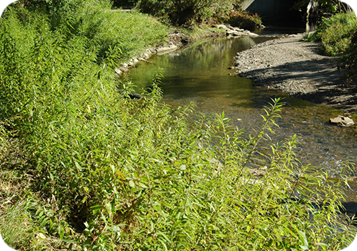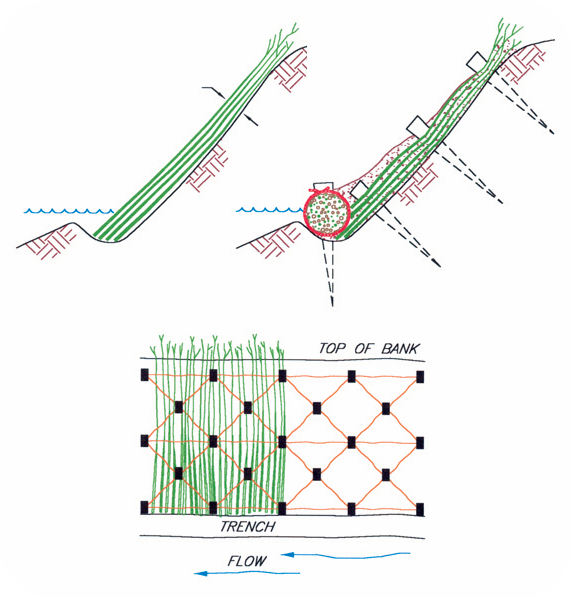Application: Bridges, canals, culverts and drains, dykes, embankments, floodgates, stormwater outflow
Description: A brush mattress is a protective mat of interlaced live branches placed on a slope or streambank and staked sufficiently to hold it in place using wire or twine, live stakes, and dead stout stakes. It is a simple and cost effective means of protecting the soil surface on slopes from erosive forces through the creation of a dense stand of woody vegetation which will eventually root along the entire length of the structure and provide long-term vegetation stabilization. The brush mattress has the potential to immediately slow velocities along the bank and accumulate sediment flowing down the streambank which can improve non-point pollution control. This technique is often used in conjunction with other methods that protect the toe of the slope from undercutting, such as wattles, tree or rock revetments.
Contribution to climate resilience: A brush mattress protects the soil surface of slopes from erosion via root stabilization, and by slowing down surface water velocity and increasing infiltration. By accumulating sediment, it can also reduce road maintenance and improve the quality of water in runoff entering streams. Because it is constructed using local labour and locally available materials, it can be repaired quicker than traditional civil engineering structures.
Supplementary sources of information:
http://projects.geosyntec.com/npsmanual/Fact%20Sheets/Brush%20Mattresses.pdf
http://www.ontariostreams.on.ca/PDF/OSRM/Tech12.pdf
http://www.ernstseed.com/products/bioengineering/brush-mattresses-and-wattles-fascines/
Background image credit: ICEM
This resilience-building measure is sourced from the Water Resource Adaptation Guide (2019) published by the National Council for Sustainable Development at the Ministry of Environment in Cambodia. The full Guide is available to download at URL https://ncsd.moe.gov.kh/sites/default/files/2019-10/Water%20Resources%20Adaptation%20Guide_March%202019_En.pdf


